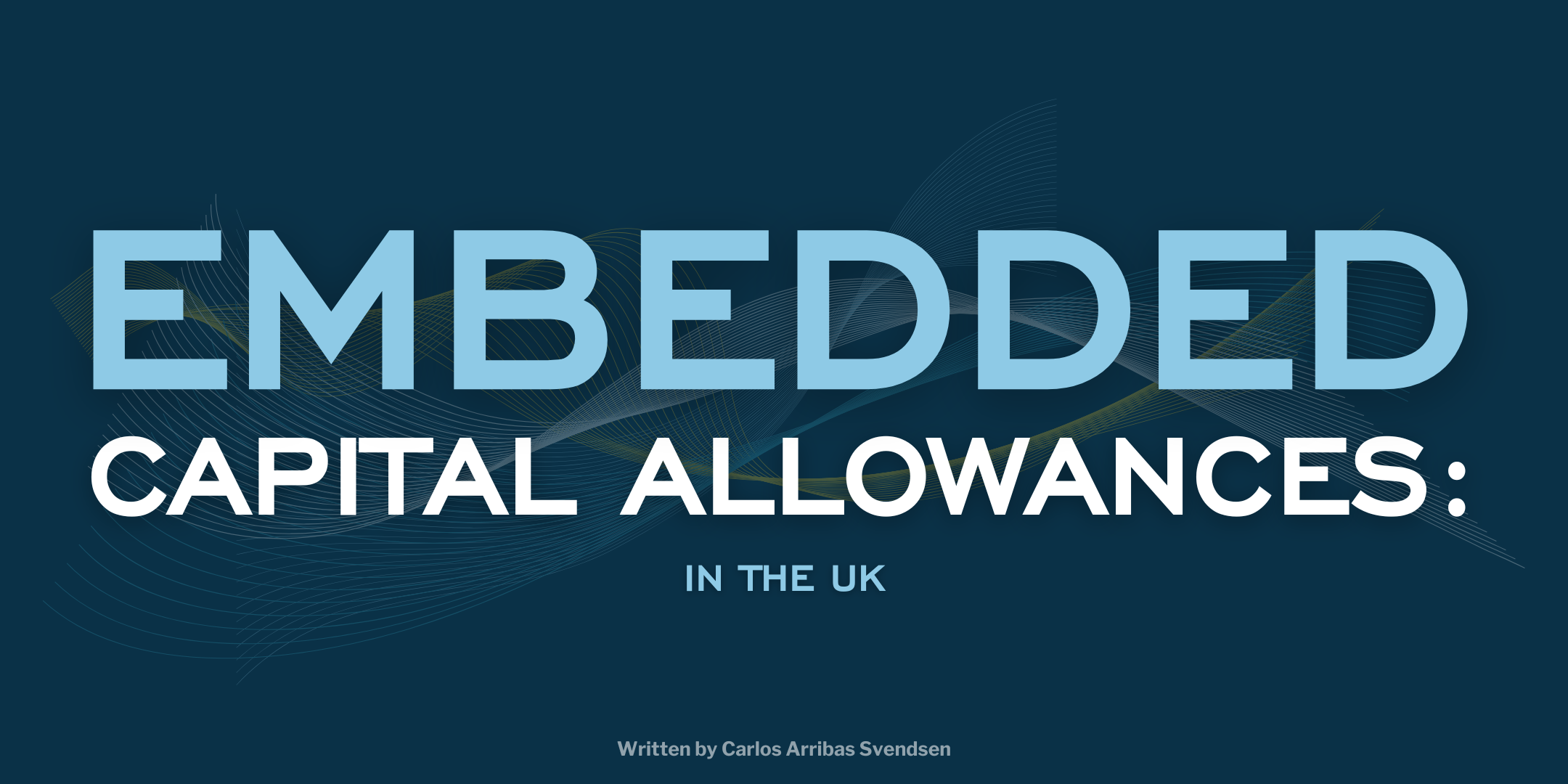_____
Capital allowances are a vital aspect of the UK tax system, providing businesses with relief on their capital expenditures. These allowances enable businesses to reduce their taxable profits, leading to significant tax savings. While many business owners are aware of standard capital allowances, the concept of Embedded Capital Allowances often remains underutilized. This blog will delve into what capital allowances are, with a particular focus on Embedded Capital Allowances, and highlight the benefits of claiming them for every business in the UK.
What are Embedded Capital Allowances?
Embedded Capital Allowances is tax reliefs that businesses can claim on certain types of expenditure, allowing them to write off the cost of these assets against their taxable income. This relief helps businesses reduce their overall tax liability and improve cash flow. Capital allowances can be claimed on various types of assets, including:
- Plant and machinery
- Fixtures and fittings
- Equipment and tools
- Vehicles
The primary aim of capital allowances is to encourage businesses to invest in their operations by providing tax incentives for capital expenditures.
Types of Embedded Capital Allowances
Annual Investment Allowance (AIA)
The AIA enables businesses to claim full tax relief on qualifying capital expenditure up to a specified limit within the year the expenditure occurs. This limit is set at £1 million per year as of 2024, offering substantial relief for businesses making significant investments.
Writing Down Allowance (WDA)
For capital expenditures exceeding the AIA limit or those not qualifying for AIA, businesses can use the Writing Down Allowance. This allows businesses to annually deduct a portion of the asset’s cost from their taxable profits. The deduction rate varies depending on the asset type and its expected useful life.
First-Year Allowance (FYA)
First-Year Allowances offer full tax relief for certain expenditures in the year they are incurred. This includes investments in energy-efficient equipment and environmentally beneficial technologies.
Super Deduction
The Super Deduction, introduced in the 2021 Budget, permits companies to claim enhanced capital allowances on qualifying plant and machinery investments made between April 1, 2021, and March 31, 2023. This includes an elevated allowance for certain assets.
Embedded Capital Allowances in the UK
Embedded Capital Allowances are a lesser-known but highly valuable form of tax relief. These allowances pertain to the integral features of a building or property that qualify as plant and machinery. Unlike traditional capital allowances, which are typically claimed on standalone assets, Embedded Capital Allowances are claimed on the hidden assets within a property.
Examples of Embedded Capital Allowances
Embedded Capital Allowances can include a wide range of items that are integral to the operation of a building. Some examples are:
- Electrical systems (e.g., wiring, lighting)
- Heating and cooling systems (e.g., boilers, air conditioning units)
- Water systems (e.g., plumbing, water heaters)
- Ventilation and extraction systems
- Lifts and escalators
- Fire alarm and sprinkler systems
- Security systems (e.g., CCTV, alarm systems)
- Integral fixtures (e.g., fitted kitchens in commercial properties, sanitary ware)
Items You Can Not Claim For
While Embedded Capital Allowances cover a broad spectrum of assets, there are certain items that do not qualify for this relief. These typically include:
- The cost of land and buildings (structure of the property)
- Assets that are not used for business purposes
- Items that are not integral features of the building (e.g., loose furniture)
- Decoration and cosmetic work (e.g., painting, carpeting)
Benefits of Claiming Embedded Capital Allowances
Claiming Embedded Capital Allowances can provide substantial benefits to businesses. Here are some key advantages:
Significant Tax Savings
By identifying and claiming Embedded Capital Allowances, businesses can reduce their taxable profits significantly. This leads to lower tax bills and more cash retained within the business, which can be reinvested or used for other operational needs.
Improved Cash Flow
Lower tax payments mean improved cash flow, which is crucial for the day-to-day operations of any business. Better cash flow allows for smoother management of expenses and investment in growth opportunities.
Enhanced Property Value
Identifying and claiming Embedded Capital Allowances can increase the value of a property. Future buyers can also benefit from these allowances, making the property more attractive on the market.
Retrospective Claims
Businesses can make retrospective claims for Embedded Capital Allowances, often going back several years. This means that even if a business has not previously claimed these allowances, it can still benefit from past expenditures.
How to Identify and Claim Embedded Capital Allowances
Identifying and claiming Embedded Capital Allowances can be complex, as it requires a detailed analysis of the property and its integral features. Here are some steps to help you get started:
Conduct a Thorough Review
A comprehensive review of your property is essential to identify all potential Embedded Capital Allowances. This often involves working with a specialist surveyor who can assess the property and itemize qualifying assets.
Seek Professional Advice
Given the complexity of Embedded Capital Allowances, it is advisable to seek professional advice from tax experts who specialize in this area. They can help ensure that all qualifying expenditures are identified and claimed correctly.
Maintain Detailed Records
Keeping detailed records of all capital expenditures and improvements made to the property is crucial. This documentation will support your claims and ensure compliance with HMRC requirements.
Make Timely Claims
While retrospective claims are possible, it is beneficial to claim Embedded Capital Allowances as soon as qualifying expenditures are identified. This will allow you to realize tax savings and cash flow benefits sooner.
Conclusion
Capital allowances are a powerful tool for businesses in the UK, providing significant tax relief on qualifying capital expenditures. Embedded Capital Allowances, in particular, offer substantial benefits by allowing businesses to claim for integral features within a property. By understanding and leveraging these allowances, businesses can achieve considerable tax savings, improve cash flow, and enhance property value.
As the landscape of tax reliefs continues to evolve, staying informed and proactive in claiming capital allowances is essential. While the introduction of the Super Deduction has garnered attention, Embedded Capital Allowances remain a valuable, yet underutilized, opportunity for businesses to reduce their tax liabilities and strengthen their financial position.
Find Out If You’re Eligible for Embedded Capital Allowances HERE!

